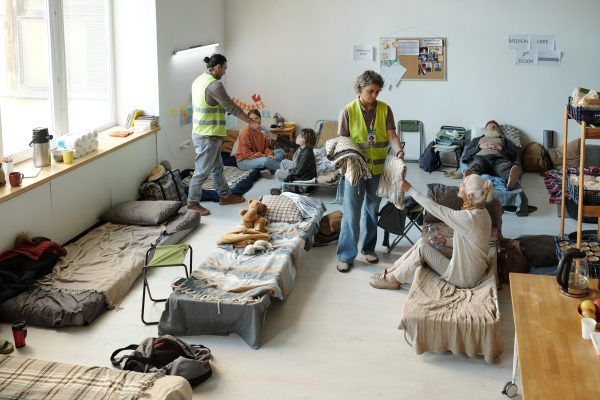Applying for Asylum in 2025 – What You Need to Know
As political instability, human rights violations, and global crises continue into 2025, the need for asylum protections remains critical. Applying for asylum in 2025 requires navigating an increasingly complex legal system, understanding updated policies, and preparing a strong case for protection. Whether you’re seeking safety in the United States, Canada, or Europe, being well-informed can significantly impact the outcome of your application.

This guide breaks down the latest asylum procedures, eligibility requirements, application tips, and potential pitfalls you must avoid. If you’re considering seeking asylum, here’s everything you need to know in 2025.
What is Asylum and Who Qualifies?
Asylum offers protection to individuals fleeing persecution based on:
- Race
- Religion
- Nationality
- Political opinion
- Membership in a particular social group
You must demonstrate that you have a well-founded fear of persecution if you return to your home country.
Key Eligibility Requirements
To apply for asylum in 2025, you generally must:
- Be physically present in the country where you’re seeking asylum.
- File your asylum application within one year of arrival (unless exceptions apply).
- Prove credible fear of persecution with supporting evidence.
- Not have participated in the persecution of others.
Changes in the Asylum Process for 2025
Immigration systems are constantly evolving. In 2025, several key updates affect how asylum applications are processed:
1. Stricter Documentation Requirements
Authorities now require more detailed evidence to support your claim, including:
- Witness statements
- Medical reports
- News articles documenting human rights abuses
- Personal affidavits
Tip: Work with an experienced immigration attorney to organize and present your evidence effectively.
2. Expedited Processing for Certain Cases
Some cases, especially those involving vulnerable groups like unaccompanied minors and victims of trafficking, may qualify for expedited review.
3. Technology in Asylum Interviews
Many asylum interviews in 2025 are now conducted via video conferencing. Prepare for a virtual interview by:
- Ensuring a stable internet connection
- Practicing clear communication
- Being ready to present documents digitally
How to Apply for Asylum in 2025
The asylum process generally involves several crucial steps. Here’s a breakdown:
Step 1: Entry and Initial Filing
- Arrival: You must physically enter the country where you’re seeking protection.
- Application Submission: File Form I-589 (in the U.S.) or the appropriate national form within one year of entry.
Step 2: Biometrics Appointment
After submitting your application, you’ll receive a notice to appear for a biometrics appointment where your fingerprints and photo will be taken.
Step 3: Asylum Interview or Court Hearing
Depending on your case:
- Affirmative Asylum: You’ll attend an interview with an asylum officer.
- Defensive Asylum: If placed in removal proceedings, you’ll present your case before an immigration judge.
Step 4: Decision
You may receive:
- Grant of asylum (protection status)
- Referral to immigration court (if affirmative application is not approved)
- Denial and removal order (in defensive cases)
Supporting Your Asylum Application
Building a strong asylum case in 2025 involves more than just submitting a form. Here’s how to increase your chances of success:
Gather Strong Evidence
Include:
- Identity documents (passport, national ID)
- Country condition reports showing threats in your home country
- Expert testimony (human rights experts, doctors)
Prepare a Personal Declaration
Your statement should:
- Describe your experiences in detail
- Explain why you fear returning
- Be honest, consistent, and emotionally compelling
Work with Legal Support
Hiring an experienced asylum attorney or connecting with nonprofit organizations can significantly improve your application quality.
Common Mistakes to Avoid When Applying for Asylum
Even strong cases can fail if applicants make avoidable errors. Beware of:
- Missing the one-year deadline without qualifying exceptions
- Inconsistent statements during interviews or court proceedings
- Providing fake or misleading documents
- Failing to update address changes with immigration services
What Happens After Being Granted Asylum?
Once granted asylum, you will receive:
- The right to work legally
- Eligibility to apply for a green card (permanent residence) after one year
- The ability to petition for family members abroad
Important: Always maintain updated records and renew documents as required.
Asylum Denials and Appeals in 2025
If your asylum case is denied:
- You may appeal the decision to the Board of Immigration Appeals (BIA).
- If necessary, escalate to the federal court system.
- Consult with an attorney immediately to file within the strict deadlines.
Additional Resources for Asylum Seekers
- United Nations High Commissioner for Refugees (UNHCR)
- Local immigrant aid organizations
- Legal aid societies
- National Immigration Justice Center
These groups provide:
- Free or low-cost legal assistance
- Emotional and community support
- Guidance on adjusting status after asylum approval
Final Thoughts
Applying for asylum in 2025 demands preparation, perseverance, and awareness of updated legal standards. With stricter documentation rules and an increasingly digitalized system, staying informed and seeking professional help has never been more critical.
Remember: Your story matters, and with the right support and preparation, you can navigate the asylum process successfully.













